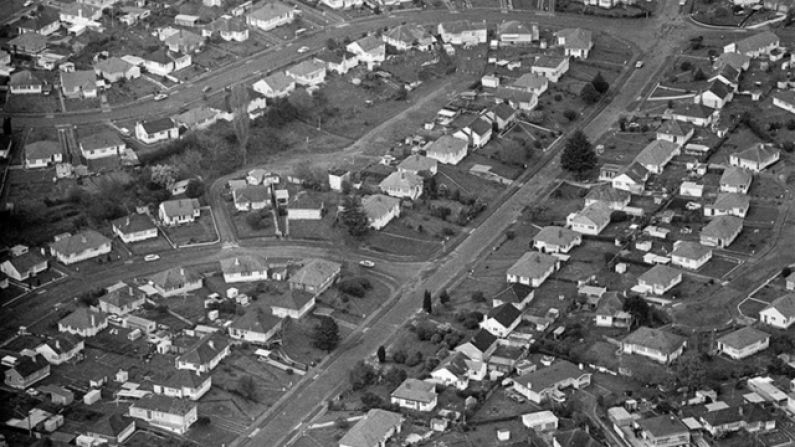The Origins of Hayes Paddock
A riverside community

An aerial view of Hayes Paddock, 1976
Reference: HCL_14057
Now a charming riverside neighbourhood, Hayes Paddock was once covered in bracken and scrub and at one point even used as a dump. Named after farmer Patrick Hayes, who once owned part of the area, the land was acquired by the government in 1937 as a site for affordable housing. The aim was to address a long-standing housing shortage made worse by World War One, the Great Depression, and the 1918 Influenza epidemic.
The government’s solution was bold: to create a neighbourhood of state houses where each family would have its own plot of land, and no two houses would be exactly alike. The best sites were selected, and the homes were built with quality materials and to high construction standards. Architects were instructed to maximise sunlight and comfort. Residents felt fortunate to live in these modern homes. Kitchens were thoughtfully laid out, with new ranges and ample storage features and every room had its own power point, a modern convenience that transformed daily life. It quickly became a tight-knit community. Children made their own fun, swimming in the river and playing games in the park. Bonfire nights and other communal events added to the sense of belonging.
Hayes Paddock was built on the belief that people’s surroundings could positively influence their lives. This philosophy meant state houses weren’t hidden away and they were built in attractive, well-connected areas. Today, Hayes Paddock stands as a testament to this vision.
This article was originally shared in our bimonthly newsletter, Ngaa Koorero Tuku Iho Archives and Reference. Subscribe to receive updates, news and stories straight to your inbox.
